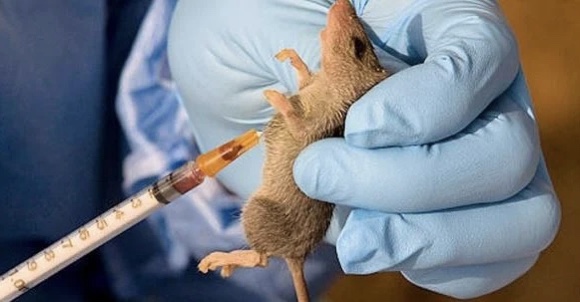In this piece, BENJAMIN SAMSON writes on the resurgence of Lassa fever and the measures being taken by governments and other stakeholders to curtail its spread.
The Nigeria Centre for Disease Control (NCDC) says 531 cases of Lassa fever and 85 deaths have been recorded in 2023. The centre disclosed this in its recent Lassa fever situation report. According to the report, between February 6 and February 12, new Lassa fever cases were recorded in nine states and 24 LGAs were 68.
The states are Ondo, Edo, Bauchi, Taraba, Ebonyi, Gombe, Benue, Nasarawa, and Plateau. The NCDC disclosed that the new cases have brought the total number recorded in the first six weeks of 2023 to 531.
The report indicated that, “Cumulatively from week 1 to week 6, 2023, 85 deaths have been reported with a case fatality rate (CFR) of 16.0 per cent which is lower than the CFR for the same period in 2022 (16.5%). In total for 2023, 20 states have recorded at least one confirmed case across 79 local government areas.
“Seventy-four per cent of all confirmed Lassa fever cases were reported from these three states (Ondo, Edo, and Bauchi), while 26 per cent were reported from six states with confirmed Lassa fever cases. Of the 74 per cent confirmed cases, Ondo reported 36 per cent, Edo 31 per cent, and Bauchi seven per cent.
“The predominant age group affected is 21-30 years (Range: 1 to 93 years, median age: 31 years). The male-to-female ratio for confirmed cases is 1:0.9.
“The number of suspected cases increased compared to that reported for the same period in 2022. Four new healthcare workers were affected in the reporting week 6.”
The disease
Speaking with this reporter, the director of public health, Kogi state Ministry of Health, Dr. Boniface Okolo, said: “Lassa fever is largely transmitted through contact with items or surfaces contaminated with urine, faeces, saliva or blood of infected rats. It can also be transmitted from person-to-person through contact with blood, urine, faeces and other body fluids of an infected person.
“Lassa fever presents initially like any other febrile illness such as malaria. Early symptoms are fever, headache, diarrhoea, abdominal pain, sore throat, etc. It is in very severe cases that the patient bleeds from body openings. If a patient does not respond to treatment for malaria or other febrile illnesses after 48 hours, it is important to test immediately for Lassa fever.
“Importantly, health care workers must be vigilant and look out for Lassa fever symptoms as not all fevers are due to malaria. Health workers should protect themselves and ensure standard care precautions are in place when treating patients.”
Likewise, an infectious disease expert, Orhe Ekhaike, said, “Lassa fever is endemic in Nigeria and cases are recorded all year round. There is usually an increase in cases between November and May during the dry season. The Lassa fever virus is transmitted by rodents, which can be found in our environment. This contributes largely to the risk of spread that occurs in Nigeria and other countries with similar ecological factors.
“Lassa fever is caused by rats. Not all rats, but a particular kind of rat, known as the natal multimammate mouse. These rats carry the Lassa fever virus and pass it on to humans through their saliva, urine, faeces, and other body fluids. Once infected, a human can also pass it on to other humans, including healthcare workers taking care of an infected person.
“We currently do not have a vaccine to protect against Lassa fever. Therefore, we rely on strengthening measures such as ensuring proper sanitation, good personal hygiene; standard care precautions by health workers etc. to prevent the spread of Lassa fever. These measures also depend on personal responsibility as we all have a role to play in preventing the spread of Lassa fever.
“Over the last few years, Nigeria has strengthened our surveillance and diagnostics architecture as well as our ability to manage cases. Significantly, there has been a reduction in the number of deaths recorded from the disease. Therefore, we have increased our capacity to find and manage cases, compared to previous years.”
Contagion
Also, a virologist at the College of Medicine, University of Lagos, Sunday Omilabu, in his view, said survivors of Lassa fever can still transmit the virus to others through body fluids 12 months after recovery. He said the virus could lurk in the semen, breast milk, saliva and blood after treatment and recovery.
Speaking in an interview with our correspondent, Omilabu said, “The virus still lurks in the body fluids of people that have been exposed, treated and overcome it for even more than 12 months and people around them can contract the virus in their body fluids.
“For example, a husband that has just recovered can easily transmit the virus in his semen to his wife when they are having intercourse. They can have the virus in their urine; so efforts must be made to follow up with those that are just recovering and they need to be educated.
“The virus can be in the breast milk even after a mother has been treated. For such people, breastfeeding should be discouraged, and the husbands too should be careful. All body fluids carry the virus, even blood and saliva. It is known to be in the body fluids for more than six months.”
Neglects
Meanwhile, a public health expert, Dr. Olufemi Illesami, in a chat with our reporter, blamed successive governments for not doing enough to fight the disease.
“Apart from portraying the poor state of Nigeria’s health care system, the rising incidence of Lassa fever in the country reveals an enduring characteristic of the federal government – the customary failure to act on time and decisively. This characteristic is reproduced from government to government with every government typically struggling to fight back only after it has been beaten on an issue several times over. Even where it lies within the government’s power to act, such as preparing a budget and getting it passed, it takes forever to do the right thing, year after year,” he said.
He added, “This has been the culture of governance in Nigeria since independence. It must be admitted that this culture has grown into an obsession. It is like waiting for a calamity to happen before taking action. What is worse, such action often is neither effective nor is it the right thing to do.
“In every Lassa outbreak, successive governments have been so slow and late in their responses that enough room was created for the disease to grow out of hand. What is worse, little or no attempt was ever made at a holistic solution to be encapsulated in an enduring policy to tackle the disease. Rather, ad-hoc solutions were often proffered, which applied in one particular situation and not in others, even when faced with the same problem.”
He said further, “The history of this virus and its migration pattern across the country is a sorry case of government neglect. When Lassa fever was first discovered in 1969 in the village after which it was named in Borno state, the government did nothing to educate the public about the deadly virus nor did it take necessary steps towards exterminating the carrier rat.
“Indeed, the virus probably would not have been discovered then but for the deaths of two infected missionary nurses, who were infected in Lassa village in 1969.”
Poor funding
Illesami also lamented poor funding by successive administrations to tackle the disease for the disease’s persistence.
He said, “In spite of the Abuja Declaration of 2001 which mandated African Union member countries to allocate 15 to 20 per cent of their annual budgets to the health sector, the federal government continues to allocate meagre resources to the sector.
“In 2019, the sector received N372.7 billion (4.18 per cent); in 2020, it got N414.5 billion (4.16 per cent) and in 2021, N549.8 billion (7.01 per cent). Out of the 2022 budget of N17.12 trillion, N380 billion and N134 billion were earmarked as recurrent and capital expenditures, respectively.
“For the average Nigerian, the challenges are many. Without a viable health insurance scheme, many Nigerians struggle to pay for health services. The World Bank estimates that Nigeria has one of the highest out-of-pocket expenditure rates on health, at 70.52 per cent. This places it in the category of countries infamous for poor human rights, civil unrest and gross abuse of resources such as Turkmenistan, Myanmar, Equatorial Guinea and Bangladesh. African countries which score better than Nigeria include the Gambia (23.19 per cent), Kenya (34.30 per cent), Uganda (38.26 per cent) and Ghana (36.22 per cent).”
Precaution
Speaking on the measures to be taken by households to prevent the spread of the disease, Okolo said: “What is significant about the Nigerian case is that rats were once a delicacy for many a youth in many parts of the country. When I was growing up in the 1940s and 50s, killing rodents with traps or catapults was a pastime for the youths in various farming villages. The main targets were rats and squirrels. Traps were set in the rats’ dens in the bush near the village, while squirrels were targeted on trees or on the ground with catapults loaded with small pebbles or stone chips. The resultant harvest would be roasted on open log fire and devoured with relish.
“Over the years, however, rats have gradually infested the domestic sphere, feeding on stored grains and other food items. This is especially true of the multimammate rat, which carries the Lassa fever virus. That’s why it is now a life-or-death decision to store food and other household items away from rodents and other pests”
Continuing, he said, “Food items should be stored in air-tight containers, while cooking utensils, including pots, frying pans, knives and spoons as well as plates, dishes, glasses, and silverware should be kept away from pests.
“The ultimate safety precaution, however, is to maintain clean households and a sanitary environment and to dispose of garbage far away from the house, rather than just in the backyard.”
Similarly, Ekhaike said: “To minimise the risk of infection, we advise members of the public to ensure their environment is kept clean at all times to avoid contact with rodents. Members of the public are also advised to practice good personal hygiene and ensure proper storage of food to avoid contamination by rodents. Health care workers should maintain a high index of suspicion as Lassa fever can present with a fever just like malaria and other illnesses. It is very important that health care workers maintain standard care precautions when managing patients.
NCDC
Meanwhile, the director-general of the Nigeria Centre for Disease Control (NCDC), Ifedayo Adetifa, has said it had set mechanisms in motion to prevent the current outbreak.
He said, “NCDC is supporting states in responding to the increase in cases. Over the last three weeks, we have deployed Rapid Response Teams to states. Our risk communications activities have been scaled up to ensure that Nigerians are aware of the risks of Lassa fever and measures to protect themselves.
“We have also supported states with medical supplies and other response commodities for the management of cases. We continue to support treatment centres across the country, to develop the capacity of health care workers to effectively manage cases.”
“Another area, which we have focused on strengthening in the last one year, is Lassa fever research. Following a Lassa fever conference, we announced the development of the National Lassa Fever Research Plan. Since then, we have begun the implementation of aspects of the plan.”
“On the sideline of the conference, the National Lassa Fever Research Consortium was inaugurated. This consortium, which includes the three main treatment centres- Irrua Specialist Teaching Hospital, Federal Medical Centre, Owo and Alex Ekwueme Federal Teaching Hospital, Abakaliki- and partners, is coordinated by NCDC.
“This has allowed us to provide a unified and well-organised structure for Lassa fever research in Nigeria. Also, we are about to begin one of the largest epidemiological studies for the disease ever carried out. This is sponsored by the Coalition for Epidemic Preparedness Innovations (CEPI).” (Blueprint)










Comments